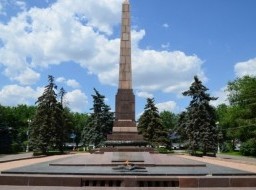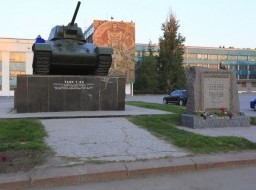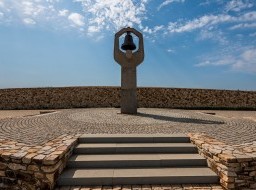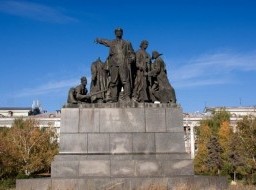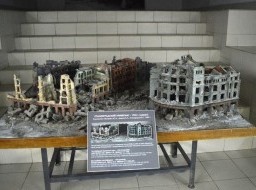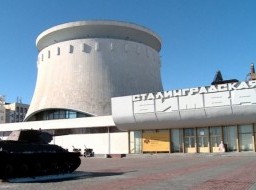Dzerzhinsky Tractor Plant
A former plant for producing tractors as well as tanks (especially during WWII) located on the northern edge of the city of Volgograd, the former Stalingrad, in Russia. Destroyed in the Battle of Stalingrad, it was rebuilt soon after and resumed the supply of tanks to the Red Army, and that of tractors soon too. Over two million tractors were made here in total. Today, however, the plant is much less busy and partly derelict, but the large socialist-realist mosaics on the front façade as well as a T-34 tank on a plinth remain in place, as does a (rare) statue of the infamous Felix Dzerzhinsky. The tractor factory was set up in the second half of the 1920s, to the north of the already existing metallurgy/steel plant at the foot of Mamayev Hill, which would supply the required raw metal (also for the Barrikady weapons and ammunition plant that's located between the steel and tractor plants). The factory was named after Felix Dzerzhinsky, the founder of the Soviet secret police (which was to become the NKVD and later the KGB). His name was dropped from the plant's official designation in 1961, but a statue of the infamous man still stands in front of its main portal. Production of tractors began in 1930. In addition to regular wheeled tractors the plant also produced tracked versions. By the outbreak of WWII a quarter of a million regular tractors and 40,000 tracked versions had been made. During WWII the plant switched to the production of tanks, most famously the successful T-34 model, of which 250 units left the plant every month. This tank became the mainstay of the Soviet Red Army. You can still find countless examples of the over 80,000 T-34s produced serving as war memorials all over the former Eastern Bloc. One such example stands right outside the plant in Volgograd. As the German Wehrmacht reached Stalingrad in the summer of 1942, the tractor plant was the first target, and the first part of Volgograd the Germans managed to take, thus making it to the banks of the Volga too. During the fierce fighting over the next few months the plant was largely destroyed. It was also here that the last shots were fired in early February 1943, even days after the German 6th Army commander had capitulated. But a pocket of Wehrmacht soldiers still held out at the tractor factory until they too surrendered. After the battle, the plant was cleared of shells and debris and provisionally reconstructed within months. It started with repairing tanks first, but soon full-scale production resumed as well. From 1944 it also went back to manufacturing tractors again. It continued to thrive after the war and by 1970 one million tractors had been assembled, and the two million mark was passed in the 1980s. However, the collapse of the Soviet Union and the subsequent economic crisis of the 1990s in Russia hit the plant hard. Privatized already in 1992, sales plummeted to just 3000 (of the planned 80,000) in 1998. In the 2000s the company was split up into different enterprises, one building military equipment (such as light tanks), another still making (tracked) tractors, and yet another machine parts. Today the plant is operating on a smaller scale and parts of it are derelict or have been demolished. The main portal with its mosaics and the memorials in front of it remain in place, though. |

